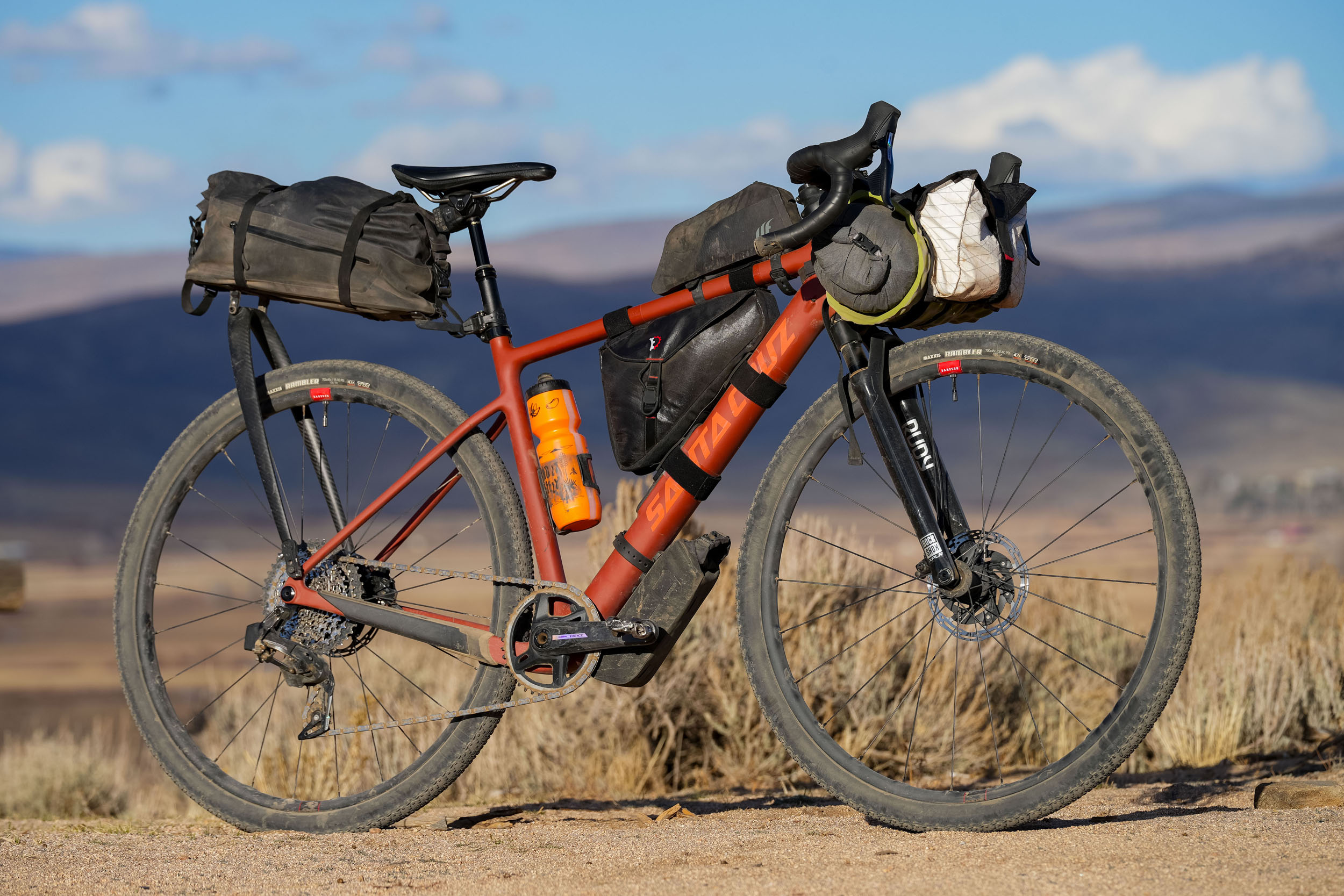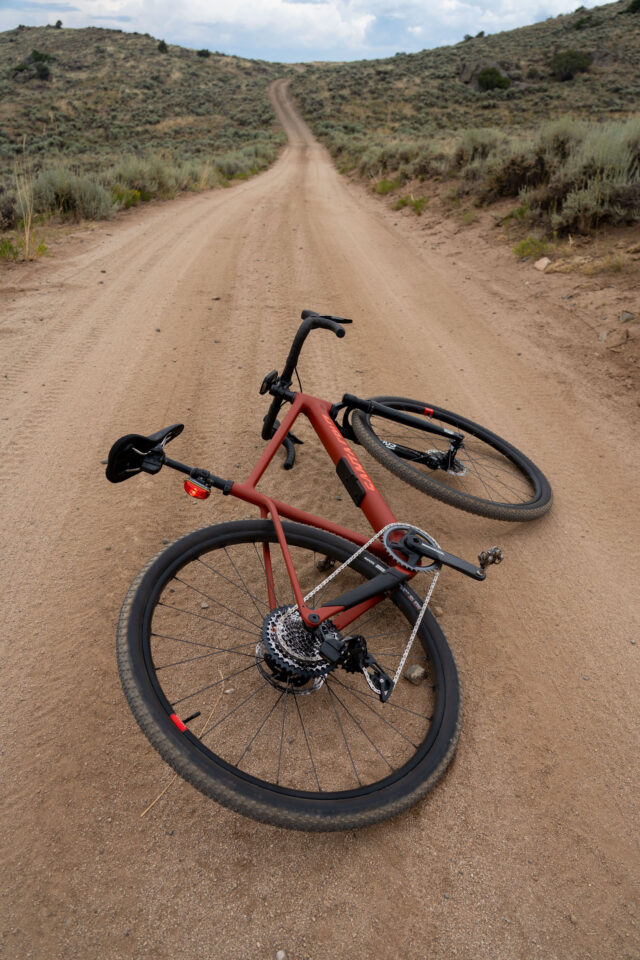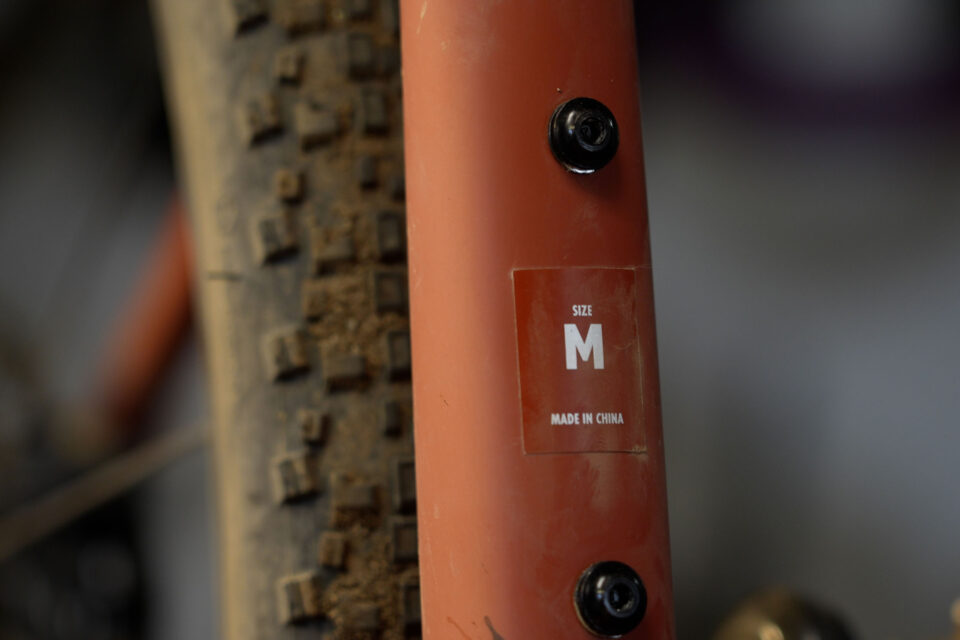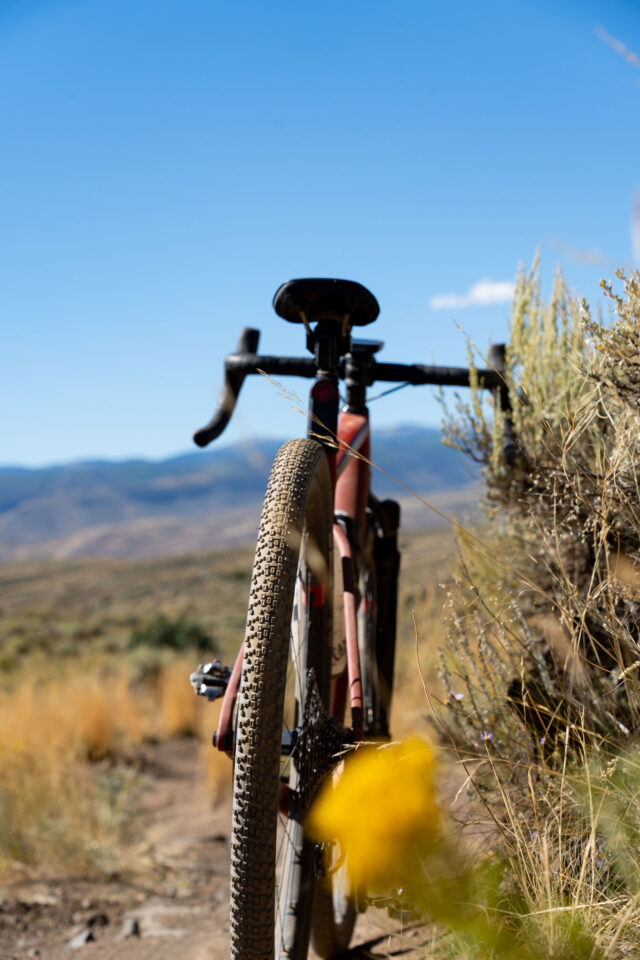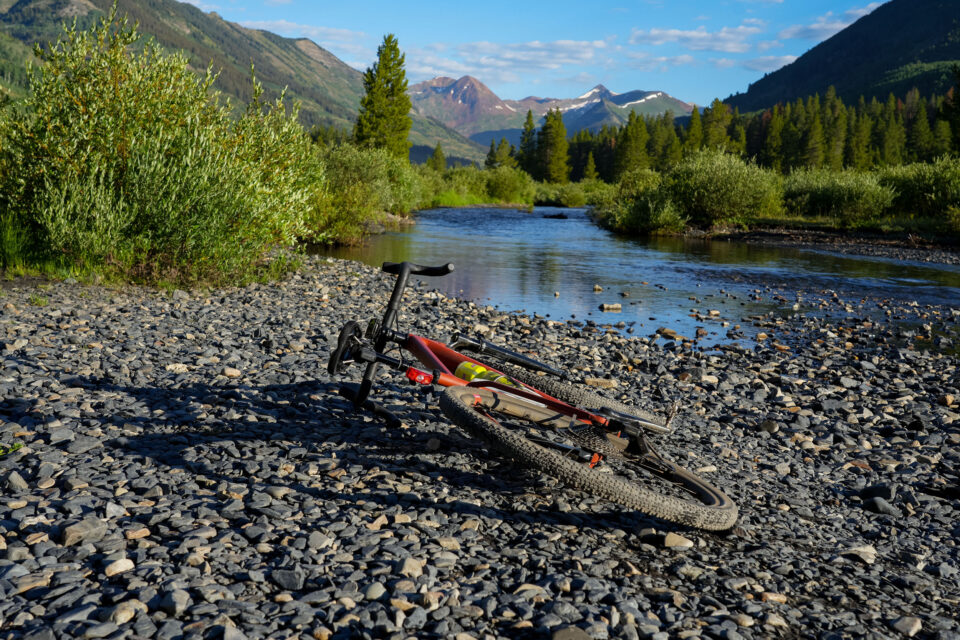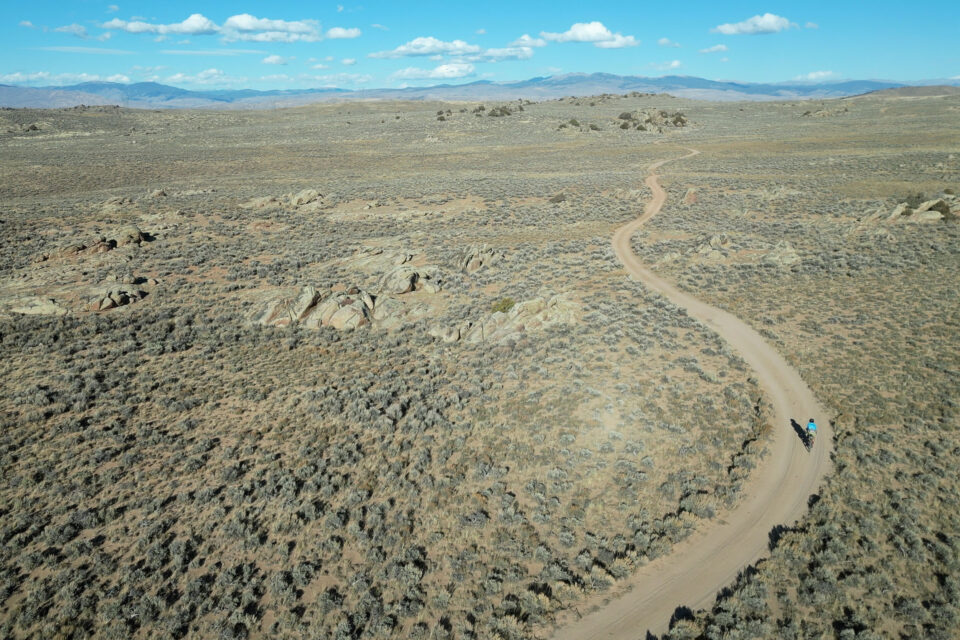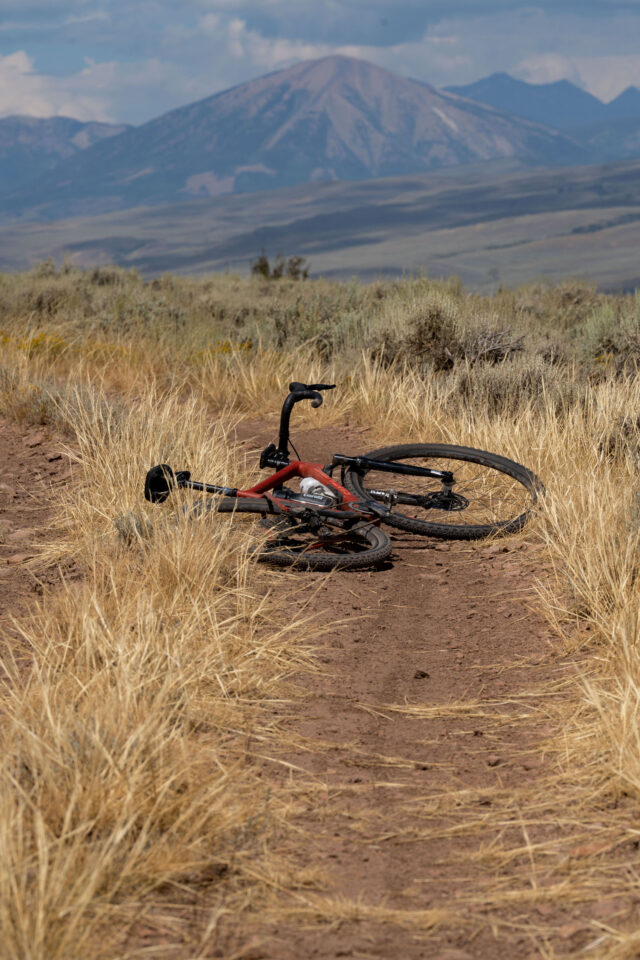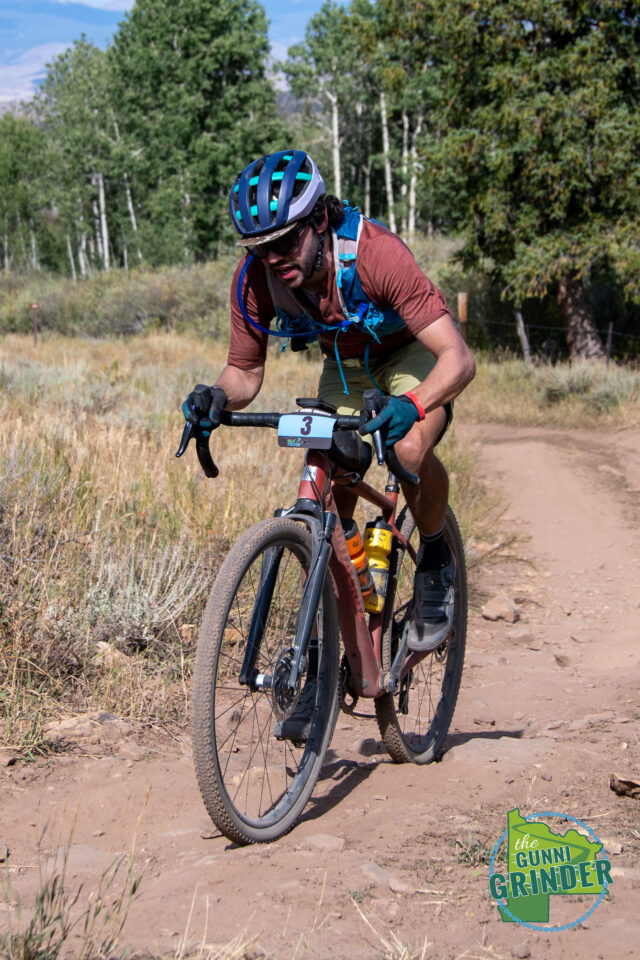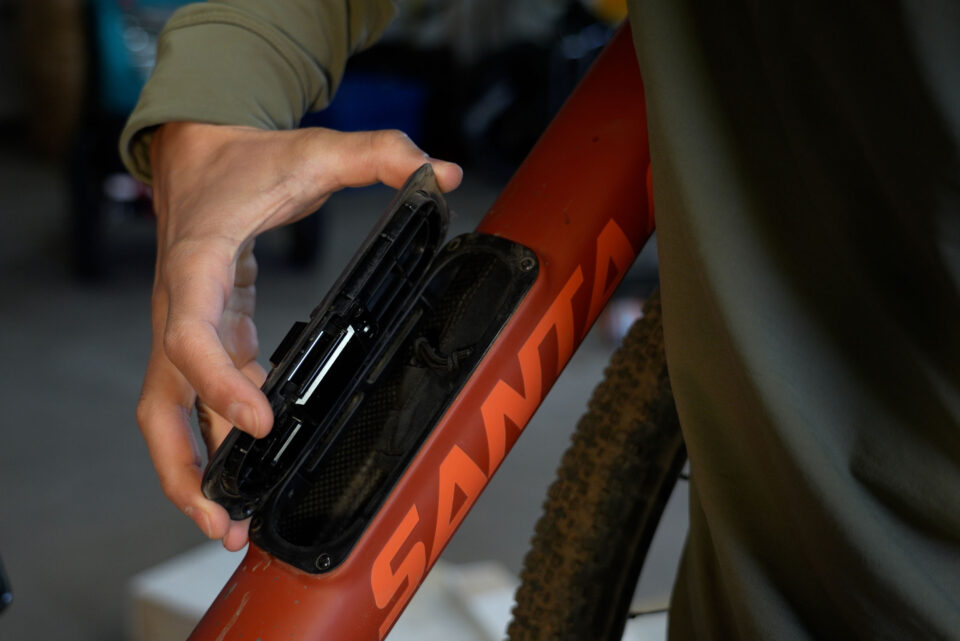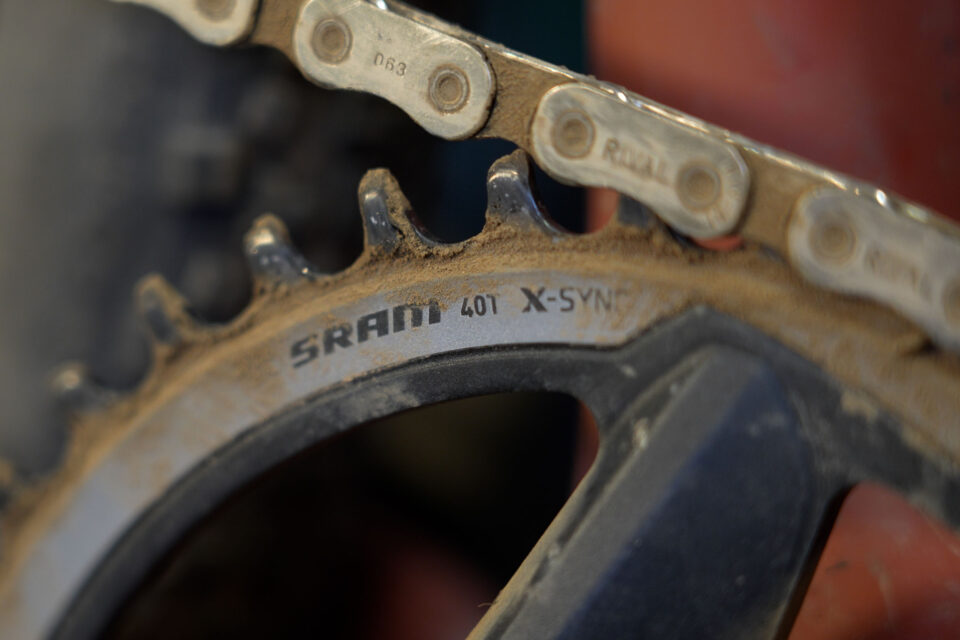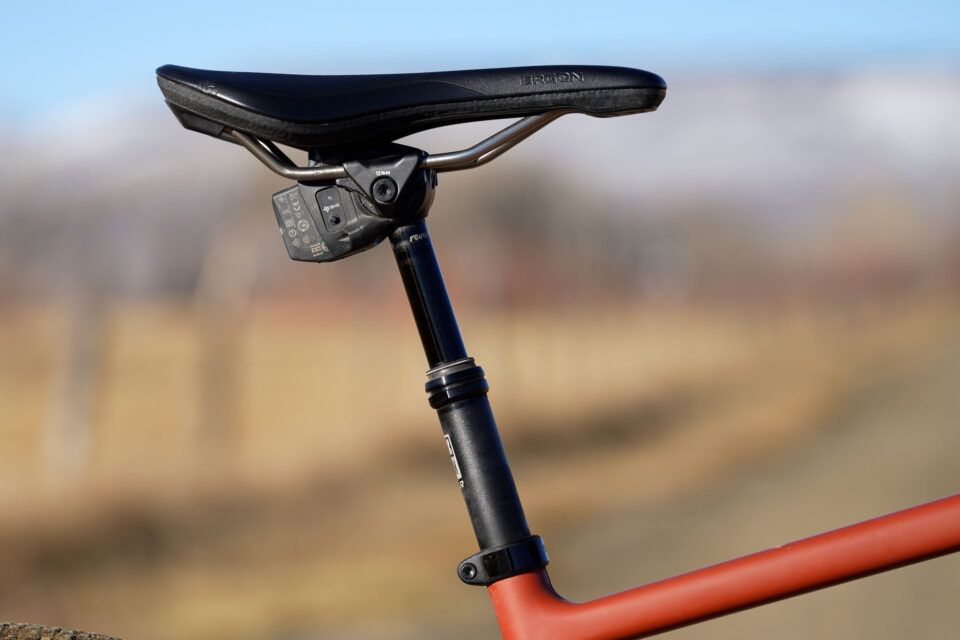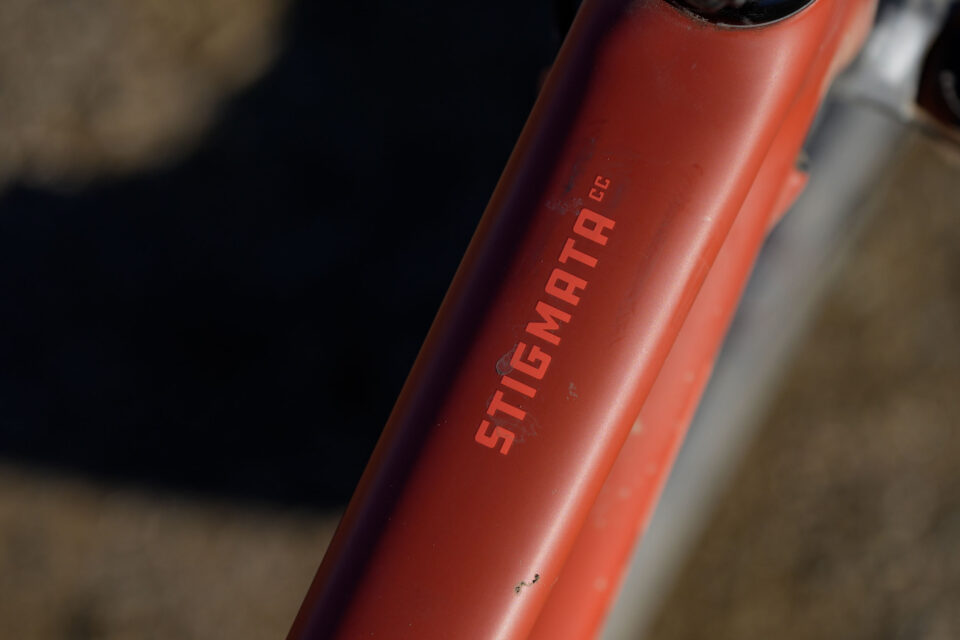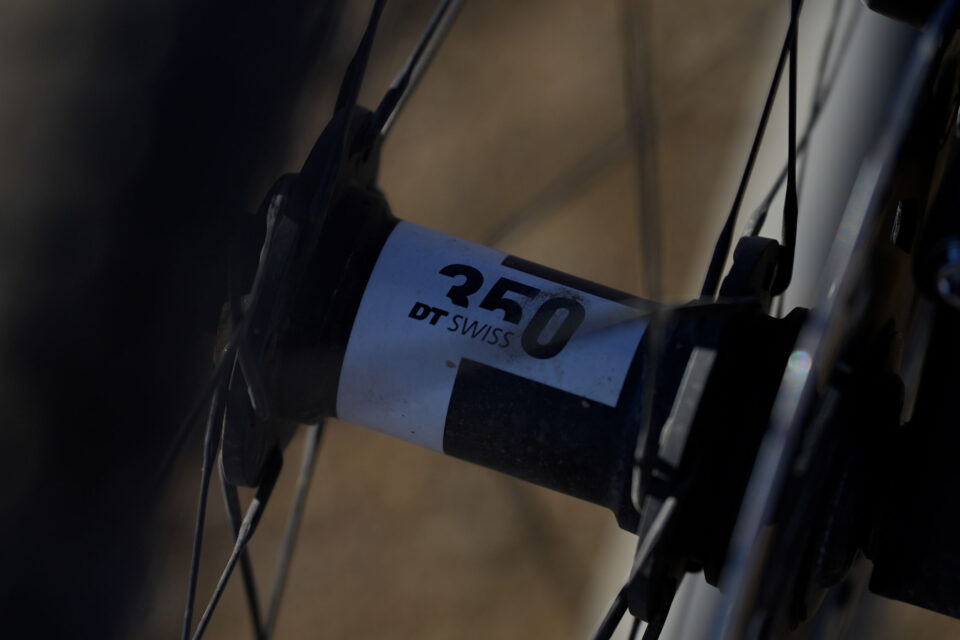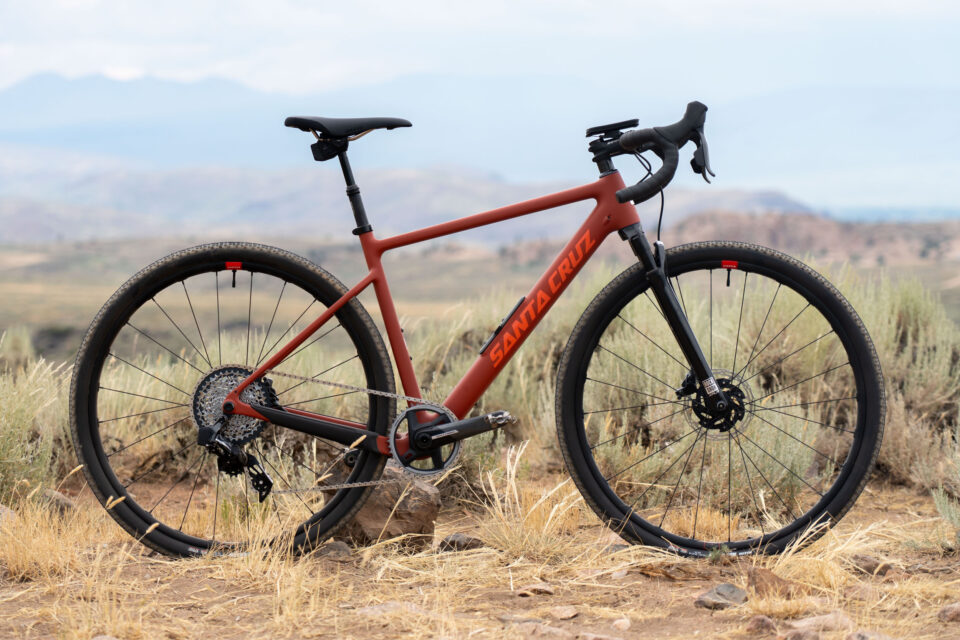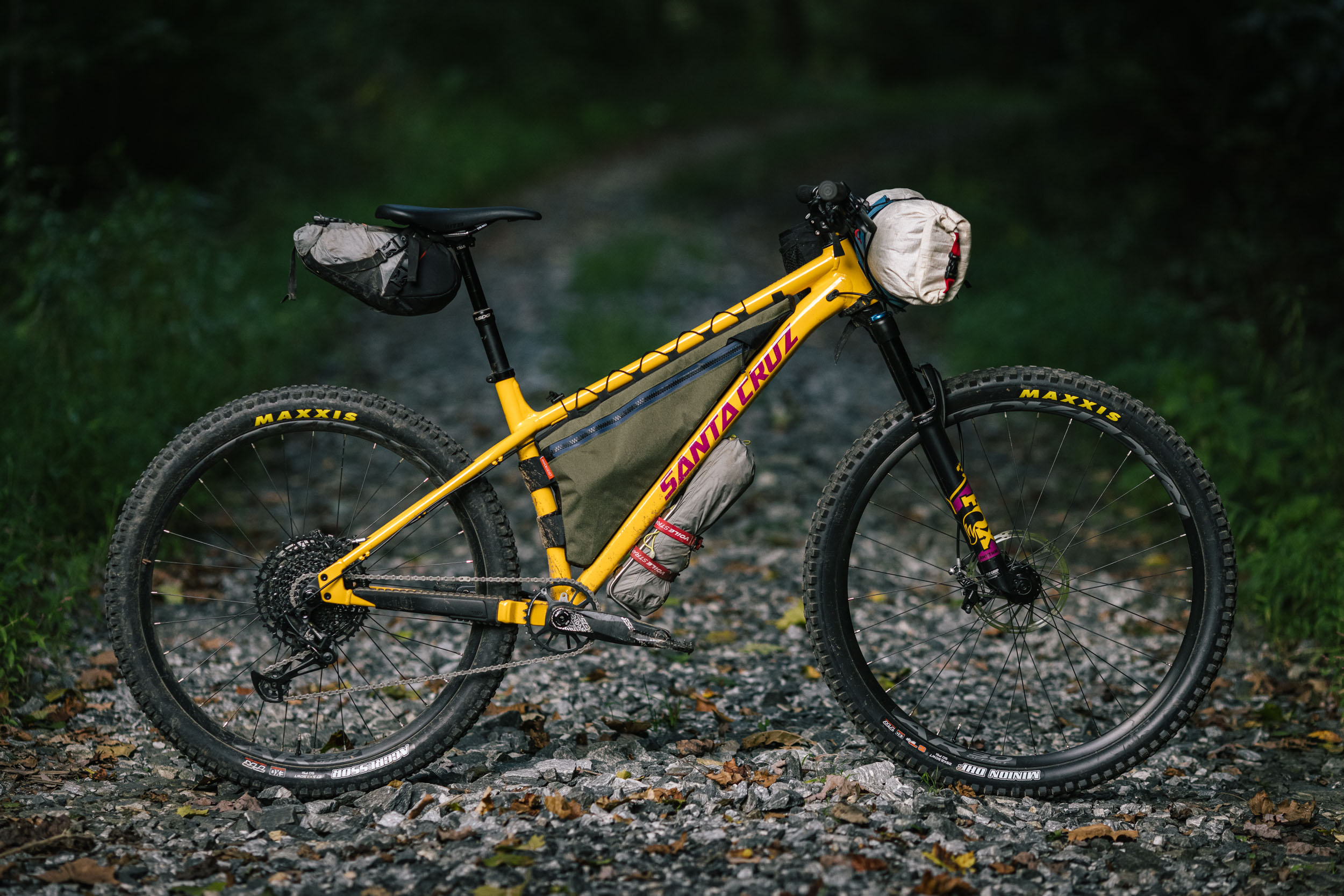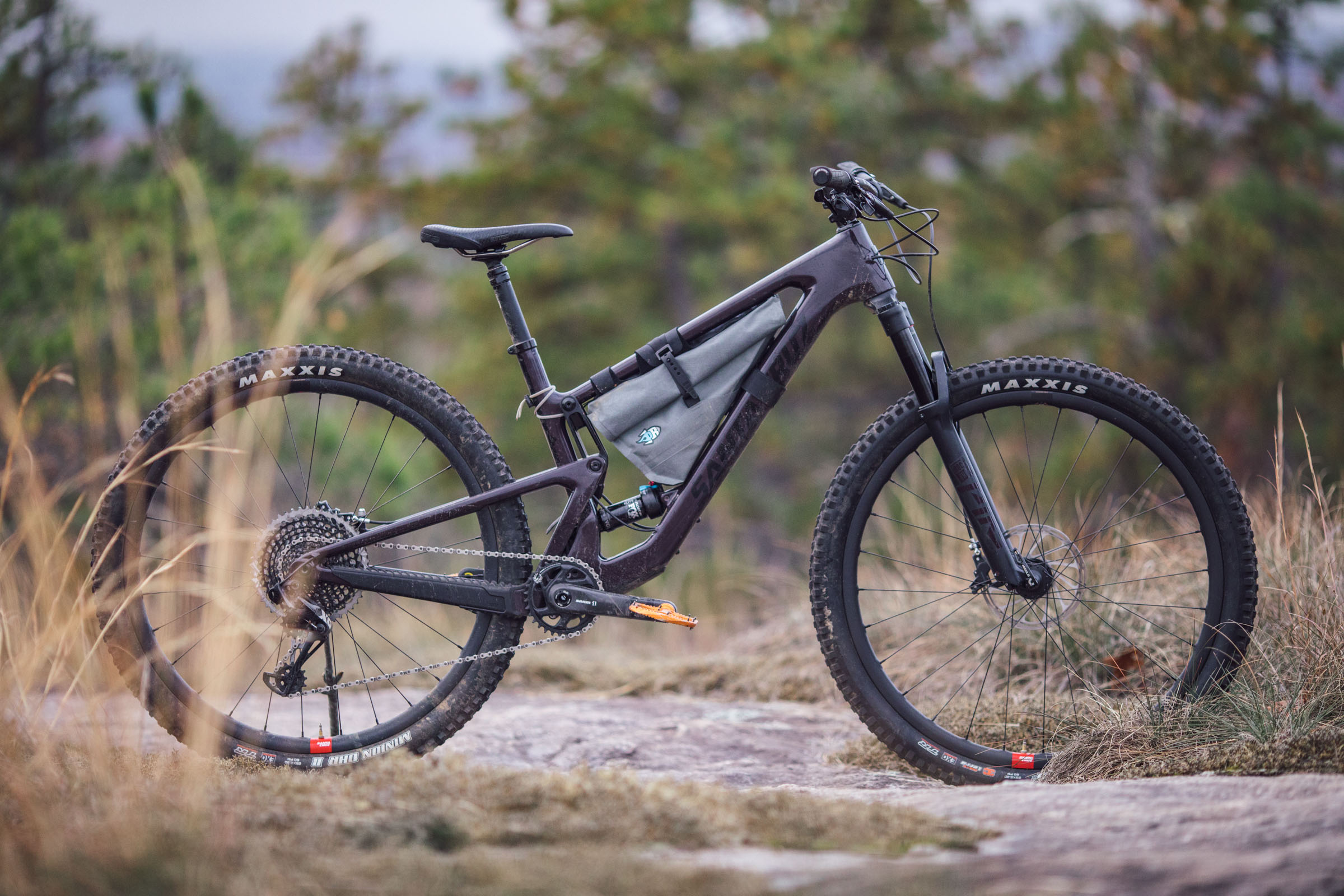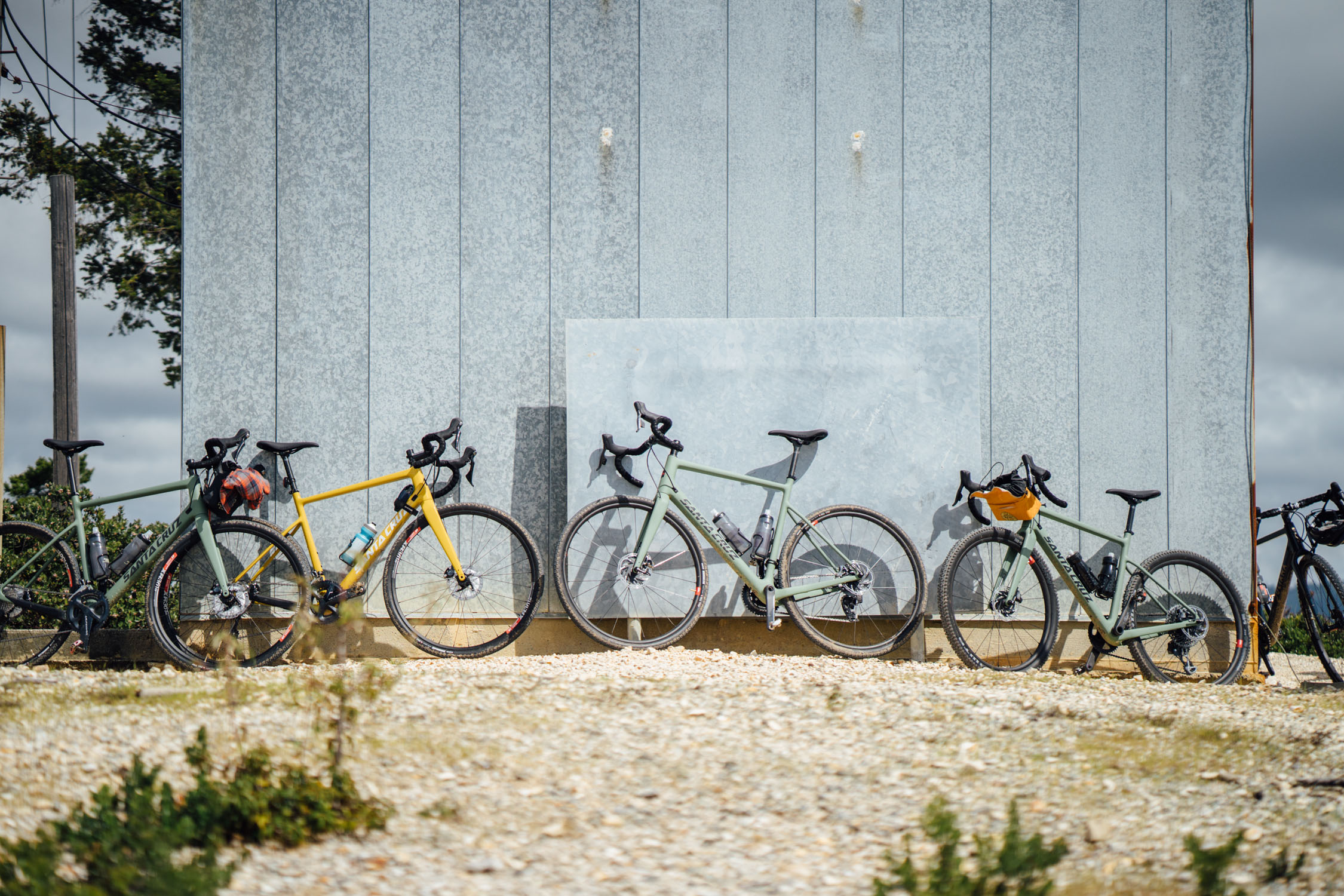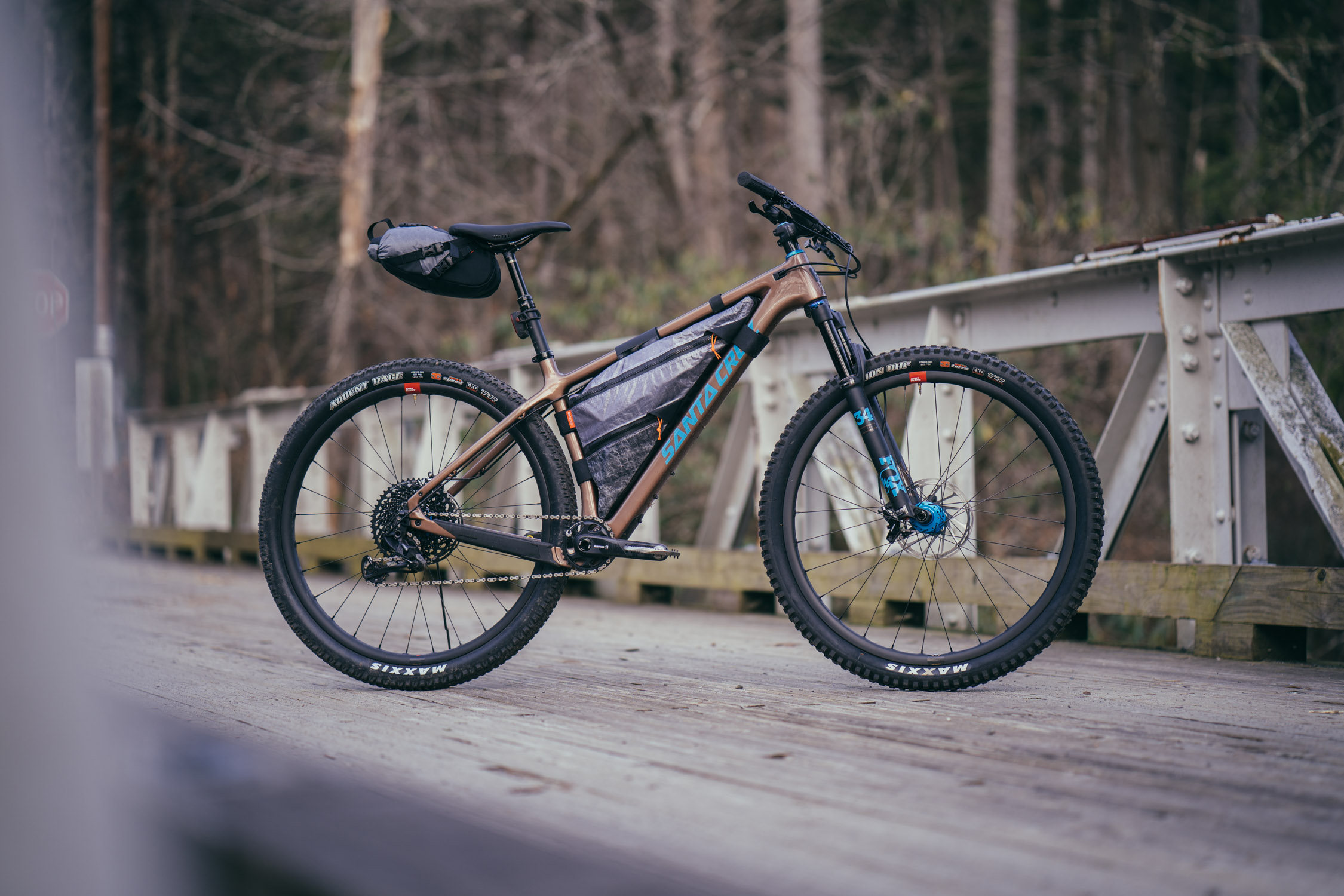Santa Cruz Stigmata Review: Seven Thoughts on V4
Share This
The Santa Cruz Stigmata, the brand’s longstanding gravel bike, was recently updated with new geometry and some intriguing features that further expand its capabilities. Version four (V4) was marketed for “big races, big distances, or big dumb rides,” and we couldn’t resist putting it to the test. Neil’s been extensively testing the latest Santa Cruz Stigmata for several months for this full review…
Santa Cruz might not be well-known for their drop-bar bikes, but the Stigmata has been around since 2007. It has always been an off-road-centric bike, whether it was their initial cantilever-equipped cyclocross version or the more recent reincarnated gravel rig. The Stigmata has evolved, especially as gravel cycling has gained popularity. But, by thinking outside the lines, Santa Cruz redesigned the Stigmata with more versatility in mind, opening up a world of possibilities.

In this review, I’ll dive into how they accomplished this. I’ve had the Stigmata long enough to recognize a few things that define this bike for me. So, instead of the typical bike review format, I’ve divided this review into seven topics that will hopefully help you better understand it. Watch the video review below and read on for the written version with photos, a build kit, and pros and cons.
Opening up new doors
Santa Cruz introduced version four of the Stigmata in August of this year, and it was evident from their marketing materials, photos, and videos that it wasn’t a small update. Clearly, they had no intention of creating just another run-of-the-mill gravel bike. I’ve had this bike for three months, but I still vividly recall my first ride. It performed admirably on pavement outside of town, well-graded gravel roads, and even more rugged two-track paths. However, it was when I hit the singletrack trails that I truly appreciated what it could do, especially in situations where a standard gravel bike might fall short. What I initially expected to be a quick hour-long ride turned into a multi-hour adventure, sparking my imagination with possibilities for future routes on this versatile bike.
One of my subsequent rides led me on a substantial gravel ride up Paradise Divide out of Crested Butte. The original plan was to descend Gothic Road, but I had a change of heart and decided that taking on the 401 Trail was a more exciting option. While it may not be the fastest bike on singletrack, I never found myself in over my head. My initial impression was yep, this is no ordinary gravel bike.
More capable numbers
One thing’s for sure: Santa Cruz succeeded in creating a gravel bike that rides much like a mountain bike. Although it still retains the appearance of a gravel bike, it’s refreshing to see Santa Cruz recognize that a bike can be efficient while gaining capability. Some might call it progressive gravel geometry, and Santa Cruz has embraced this concept. They’ve even departed from the conventional road bike sizing standards and adopted traditional mountain bike sizing, offering frame sizes from small to XXL. I had the chance to test a medium model, and it fits me quite well, even though I usually fall somewhere between medium and large. At no point did I feel that the bike was too small.
To better understand the improvements in ride quality over the previous version, it’s worth noting that Santa Cruz shortened the stem length on all its builds and made the frame’s front-center notably longer—the medium frame has a 25mm longer reach than the V3 54cm frame. They’ve also slackened the head tube angle from 71 to 69.5 degrees. These two changes significantly evolved the front end of the bike. While it’s not as dramatically slack as a bike like the Chamois Hager from Evil, it strikes a nice balance within the realm of progressive gravel geometry. It aligns with a few other bikes that are blurring the lines between drop-bar MTB and gravel, such as the Kona Sutra LTD, which, interestingly, features a shorter reach but the same head tube angle. All in all, the medium-sized model now boasts a 1,063mm wheelbase, which might seem unconventional for a gravel bike, but I found it to be ideal for all-day rides on rugged terrain.
V4 Santa Cruz Stigmata Geometry
| Size | S | M | L | XL | XXL |
|---|---|---|---|---|---|
| Reach | 390 | 405 | 420 | 435 | 450 |
| Stack | 564 | 576 | 600 | 612 | 631 |
| Head Tube Angle | 69.5° | 69.5° | 69.5° | 69.5° | 69.5° |
| Seat Tube Length | 455 | 485 | 515 | 545 | 575 |
| Front Center | 625 | 645 | 668 | 688 | 710 |
| BB Height | 278 | 280 | 280 | 282 | 282 |
| BB Drop | 78 | 76 | 76 | 74 | 74 |
| Wheelbase | 1043 | 1063 | 1087 | 1108 | 1130 |
| Rear Center | 423 | 423 | 423 | 423 | 423 |
| Head Tube Length | 105 | 120 | 145 | 160 | 180 |
| Top Tube Length | 552 | 570 | 592 | 610 | 631 |
| Seat Tube Angle | 74° | 74° | 74° | 74° | 74° |
| Standover Height | 728 | 753 | 778 | 804 | 830 |
Aside from its shape and angles, not much has changed aesthetically from the previous version. It retains its sleek lines, maintaining an attractive industrial design and a striking matte brick red colorway. As for ride quality, it’s an undeniably stiff bike constructed with their Carbon CC layup. That said, it doesn’t exhibit an excessively harsh ride. Additionally, when you add some weight, it provides the bike with a touch more flex and suppleness, though not to the extent of steel or titanium frames when under load.
Tire clearance still says it’s a gravel bike
Despite those blurred lines, the Stigmata firmly retains its identity as a gravel bike. It’s not the type of bike I’d choose for tackling The Great Divide Mountain Bike Route (GDMBR) or competing in the Tour Divide again. We observed firsthand that racers who used gravel-specific bikes in the Tour Divide last year encountered various issues. However, if you were to make a case for bringing a gravel bike on the GDMBR, this might be the one.
The limiting factor is tire size. The Stigmata comes equipped with 45mm Maxxis Ramblers as standard, but it can accommodate 50mm tires with a 1x configuration or 45mm with 2x. I experimented with a pair of 50mm Maxxis Ravagers, and the additional volume and aggressive tread pattern boosted the bike’s confidence, especially in faster corners and technical sections of singletrack. Could you squeeze in slighyl bigger tires? It’s conceivable, but doing so might compromise mud clearance. If you’re planning adventures with this bike, it’s best to adhere to their recommended clearance. It’s also worth mentioning that Santa Cruz dropped the 650b options and designed the new Stigmata specifically around the 700c platform, so they don’t recommend a two-inch+ 27.5 setup.
Suspension makes a difference
Another significant change with the v4 Stigmata is that the frame is now suspension-corrected, aligning with the longer axle-to-crown measurement typically associated with 40mm suspension forks. This aspect piqued my interest, as I had never had the chance to test a gravel-specific suspension fork, primarily due to their incompatibility with drop bar mountain bikes designed for 2+ inch tires. Maybe be one day.
Regardless, I appreciated the additional 40mm of travel. It provided a noticeable improvement on rough stretches of roads, particularly on washboard surfaces. Additionally, it offered enough travel to preload the front end for technical moves or descents. And when the fork isn’t necessary, it locks out, although not entirely. I noticed this during some climbs when I was out of the saddle, as it felt a bit more sluggish than a rigid carbon fork.
Another observation was that when I had a handlebar bag mounted up front, it could pose clearance issues with the front tire—even a bag with a small diameter. Nevertheless, the positives of the fork outweighed the negatives, playing a significant role in the Stigmata’s remarkable ride quality and comfort.
Race Worthy
If you’ve been following major off-road races this year, you’ve probably come across the name Keegan Swenson. Keegan had a remarkable year, claiming victories in some of the most prominent races here in the United States on the new Stigmata. Inspired by his achievements and the Stigmata’s impressive performance, I decided to enter a 120-mile local gravel race here in Gunnison to put this bike to the test. Since I haven’t raced much recently, and it’s been quite a while since I participated in a gravel bike race, my primary goal was to finish. Nevertheless, I was excited to put it all out there.
During the event, I came to a few realizations. My fitness isn’t what it used to be. I pushed hard and felt fairly strong during the first half of the race, but I hit a wall around the halfway point. However, it wasn’t the bike’s fault; I simply went out too aggressively. The bike accelerated and kept pace with the lead pack for the initial 40 or so miles, maintaining the stable yet agile characteristics necessary when closely grouped with other racers.
As the race progressed, I began to notice the suspension working against me, particularly on exceptionally smooth gravel roads. However, it truly excelled on technical descents, providing me with the confidence to maintain high speeds and even fend off a few competitors toward the end of the race on a challenging section of rough and sandy two-track. Like Keegan, if I were to race this bike again, I would opt for the rigid fork. Nonetheless, the bike handled exceptionally well for eight hours at race pace.
Small details, big upside
One of the most notable revelations about this bike, and indeed many Santa Cruz models, is the meticulous attention to detail. It all begins with the glove box, a feature inherited from the brand’s mountain bikes. The glove box is designed to store their tube purse and tool wallet, effectively providing a neatly concealed repair kit that would typically be attached to the frame or your person in some way. I loved this feature and wish all of my bikes had it.
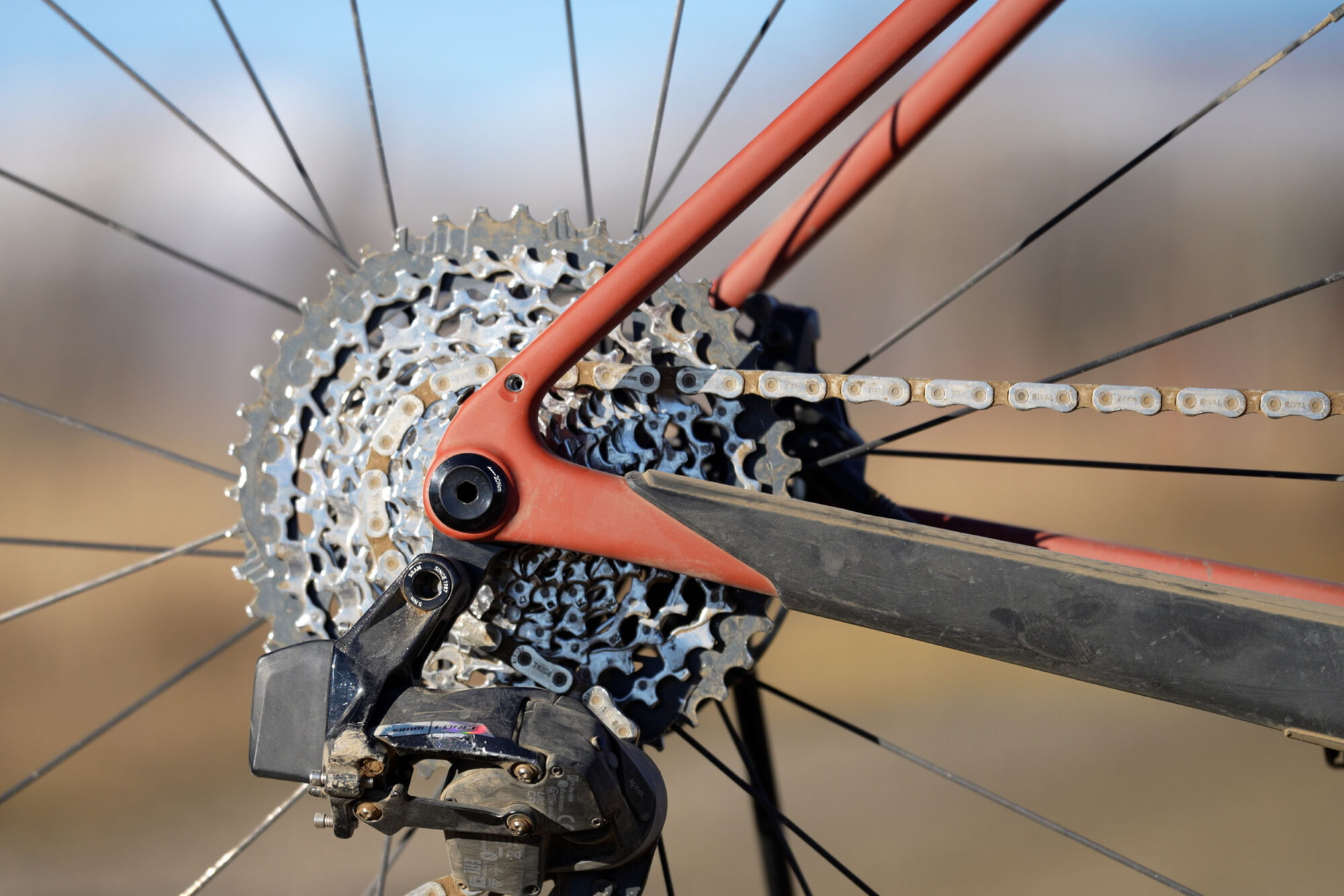
The v4 Santa Cruz Stigmata also comes equipped with a UDH dropout, providing a readily available replacement hanger. Additionally, if you prefer, you have the option to install a T-type drivetrain on the Stigmata to achieve different gearing. The frame is also compatible with a 2x drivetrain setup and features a user-friendly and trusted threaded bottom bracket. Furthermore, it includes internal dropper post routing and offers three bottle mounts on all frame sizes.
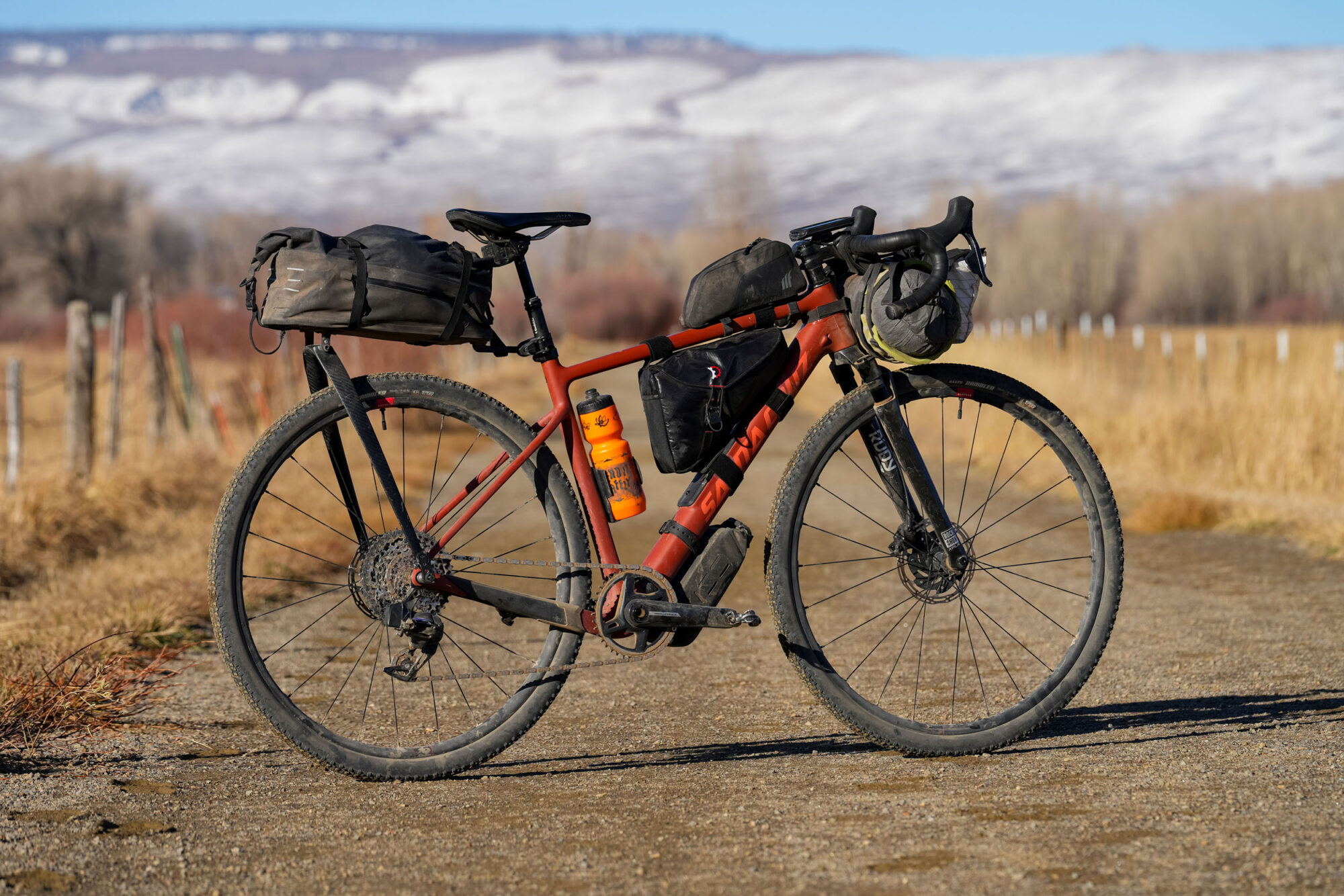
The Stigmata also comes equipped with front and rear fender mounts. I inadvertently used the rear mounts for attaching a rear rack using the Tailfin system with no issues. However, it’s important to note that the bike isn’t built to handle heavy rack loads, so exercise caution and avoid overloading it in this manner. That being said, if Santa Cruz wanted to make this a true adventure-oriented bike, incorporating dedicated rack mounts would be a valuable decision, particularly since this bike isn’t intended for the roughest bikepacking routes. It’s undoubtedly rack-friendly, and my decision to use a rack was driven by the fact that the SRAM AXS dropper post is incompatible with seatpacks due to the battery’s positioning. If you’re interested in this bike and in need of rear rack mounts, the Robert Axle Project fit kits offer a practical solution to add mounts near the dropout.
High-end bike, high-end build
The Force 1 RSV build featured the new Force 12-speed drivetrain. It’s been a while since I had last used a SRAM drop-bar cockpit, and I was impressed. Not only did the brakes have a more substantial bite than I remember, but the crisp and precise shifting was notably improved. The electronic shifting paddles on the levers were easy to engage, and the integration of both buttons to control the AXS dropper was really slick. The bike was equipped with a Force 11-44 cassette and a 40T chainring. Although the gearing felt a bit steep for mountainous terrain, the bike’s light weight and efficiency made it manageable. However, I believe a 38 or 36T chainring would have been even more suitable for some of my rides. Or there’s the option for a T-type Transmission.
Build Kit
- Frame Santa Cruz Stigmata Carbon CC, Medium
- Fork RockShox Rudy Ultimate XPLR, 40mm
- Front Hub: DT Swiss 350, 12×100, Centerlock, 24h
- Rear Hub: DT Swiss 350, 12×142, XDr, Centerlock, 36t, 24h
- Rims: Reserve 25|GR 700c
- Tires: Maxxis Rambler, 700 x 45mm, DC, EXO, TR
- Crankset: SRAM Force AXS DUB, 40T
- Derailleur: SRAM Force XPLR AXS, 12-speed
- Shifter: SRAM Force AXS, 12spd
- Cassette: SRAM XG-1271 XPLR 10-44T
- Bottom Bracket: SRAM DUB 68mm Road Wide BB
- Handlebar: Zipp Service Course SL-70 XPLR Bar
- Stem: Zipp Service Course Stem, 70mm
- Bar Tape: Velo Bar Tape
- Headset: Cane Creek 40 IS Integrated Headset
- Brakes: SRAM Force
- Rotors: SRAM CLX R, Centerlock, 160mm
- Saddle: WTB Silverado Medium, Ti
- Seatpost: RockShox Reverb AXS XPLR, 27.2, 75mm
I didn’t encounter any issues with the drivetrain, but the dropper blew up while I was descending high alpine singletrack. Upon attempting to lower the seatpost, I heard a significant pop, and the wiper seal exploded from the collar during compression. I sent it in for a warranty claim and received a replacement two months later. They never provided an explanation for what happened. I couldn’t help but wonder if it was related to the high altitude, but it remains a mystery. However, the replacement dropper operated flawlessly afterward, significantly enhancing maneuverability during descents when I could reattach it to the bike.
Another component I wasn’t too excited about when I inspected the spec sheet was the narrow drop bars, which measured around 42 or 44 centimeters wide. However, after riding the bike for a while, I found that the bars were proportional to the bike, and they didn’t bother me as much as I had initially anticipated. That changed when I added a handlebar bag and realized there was limited clearance between my hands in the drops and the bag itself.
The bike also comes with Reserve wheels—Santa Cruz’s in-house brand. More specifically, it has carbon 25/GR rims paired with DT 350 hubs. The 24-spoke wheelset was stiff, comfortable, and super light, and helped keep the overall weight of the bike to 21 pounds even (9.52 kilograms).
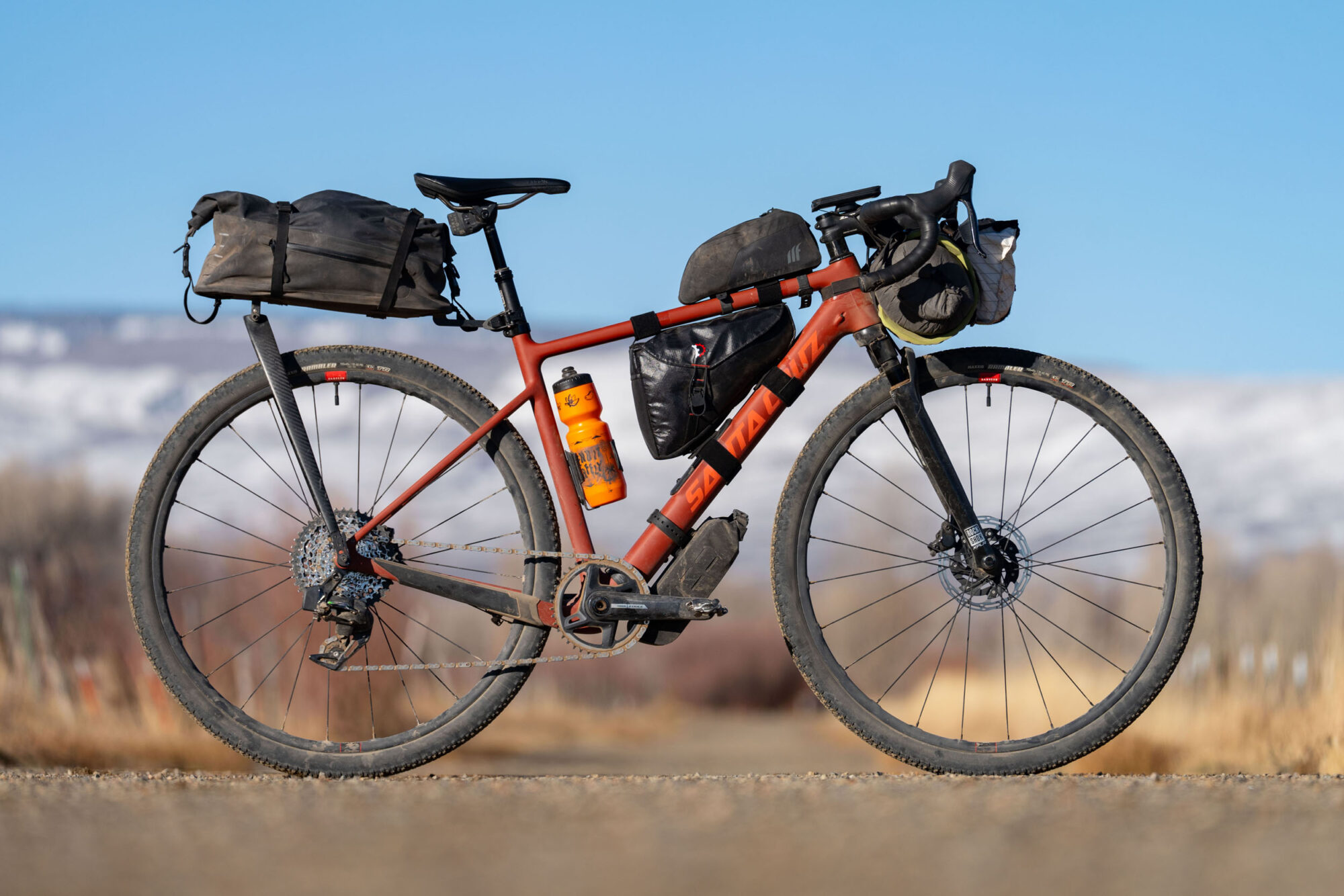
- Model/Size Tested: Santa Cruz Stigmata Carbon CC, Medium
- Actual Weight: 21 pounds (9.52 kilograms)
- Place of Manufacture: Taiwan
- Price: $7,699
- Manufacturer’s Details: Santa Cruz Bicycles
Pros
- Fast, light, and efficient + Playful Gravel Geometry = new ride opportunities
- Race-worthy geometry and build
- Glove Box is such a great use of space
- Lightweight frame and build keeps bikepacking rig weight low
- Handles weight well and remains efficient
Cons
- 50mm tire clearance is limiting
- Expensive
- Would love to see rack mounts
- Rudy fork doesn’t lock out completely
Wrap Up
Comparing the new v4 Santa Cruz Stigmata with some of the other gravel bikes I’ve owned in the past, as well as the v3, I can confidently say that I wouldn’t want to settle for a less capable bike, given the choice. Riding the Stigmata made me rethink my bike ride, my route, my pace, and the fun factor. It reignited my passion for some of the terrain and trails surrounding my home, inspiring a newfound sense of creativity, much like the ingenuity displayed in the bike’s design.
Now, as is often the case with Santa Cruz bikes, high-end models come with hefty price tags. The frameset is priced at $2,700 USD, the Rival 1x AXS at $4,900 USD, and the Force 1 AXS RSV at $7,700 USD. But you receive a lifetime warranty for the frame and the Reserve wheels. While I may not have the means to invest in the top-end build, the bike possesses a ride quality that makes me seriously contemplate adding it to my collection.
What are your thoughts on the Stigmata, its progressive geometry, and the future of gravel bikes? Leave a note in the conversation below.
Further Reading
Make sure to dig into these related articles for more info...
Please keep the conversation civil, constructive, and inclusive, or your comment will be removed.






